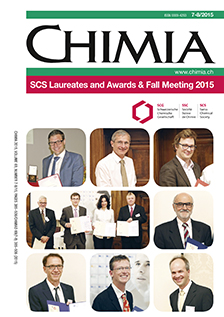Sedaxane, Isopyrazam and Solatenol™: Novel Broad-spectrum Fungicides Inhibiting Succinate Dehydrogenase (SDH) – Synthesis Challenges and Biological Aspects
DOI:
https://doi.org/10.2533/chimia.2015.425Keywords:
O-biscyclopropylaniline, Isopyrazam, Sdhi, Sedaxane, SolatenoltmAbstract
Sedaxane (SDX) 1, isopyrazam (IZM) 2 and Solatenol™ (STL) 3 are broad-spectrum pyrazole carboxamides, which originate from novel chemical classes of fungicides. Their mode of action (MoA) is inhibition of succinate dehydrogenase (SDH), which was recognized for a long time to deliver only compounds with a narrow biological spectrum. This view changed with the market introduction of BASF's boscalid in 2003. All major agro-companies subsequently worked in parallel on this MoA successfully and recently introduced new compounds to the market. Syngenta entered the SDHI area in 1998 and was able to introduce three complementary compounds to the market between 2010 and 2012. In this short review some synthesis challenges and biological effects of SDX 1, IZM 2 and STL 3 will be covered. New cost-efficient synthesis strategies for the preparation of o-biscyclopropyl-aniline, new benzonorbornene intermediates and the key pyrazole carboxylic acid intermediate which is essential for all three Syngenta SDHIs, will be in the focus of this reviewDownloads
Published
2015-08-19
Issue
Section
Scientific Articles
License
Copyright (c) 2015 Swiss Chemical Society

This work is licensed under a Creative Commons Attribution-NonCommercial 4.0 International License.
How to Cite
[1]
H. Walter, H. Tobler, D. Gribkov, C. Corsi, Chimia 2015, 69, 425, DOI: 10.2533/chimia.2015.425.







